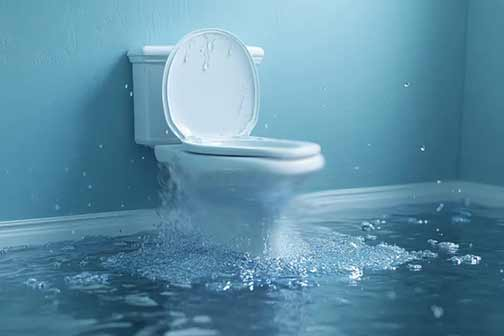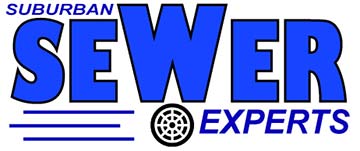
Although it may sometimes feel that way, sewer line backups in your home don’t just happen. Before a sewer line backs up, the processes leading up to the event have been building up for a long time. Keyrenter DFW Midcities notes that the sewer line backup only happens because the warning signs were missed.
When your sewer line backs up, it is often the culminating stage of a problem that has been ongoing in your home for a while. However, since the precursors to this emergency are not as disruptive as the eventual sewer line backup itself, those problems are overlooked or misinterpreted.
Why is the sewer line in your Oak Brook home backing up? In this article, we provide the information to help you understand and solve this highly damaging plumbing problem.
Why your sewer line is backing up
The only reason a sewer line backs up is that it is blocked. There are many reasons why a sewer line becomes blocked. Sometimes it happens for natural reasons that are completely out of your hands. Other times, the line is blocked as a result of how it is used (or misused).
Here are the most common causes of sewer line clogs and blockage:
- Fat, oil, and grease (FOG)
If fats, oils, and grease are constantly poured down drains, your sewer line will be more susceptible to clogs and blockages. Fat congeals when it enters a sewer line, forming a solid mass that adheres to the sides and bottom of the pipes, slowing the flow of water and trapping debris until it becomes “fatbergs” that block the pipe channel completely.
- Improper disposal of non-flushable items
These include many of the so-called flushable items that people flush into their toilets, such as paper towels & wipes, diapers, sanitary products, cotton swabs, dental floss, latex condoms, cat litter, etc. As a rule, if it is not toilet paper, human waste, or water, it should not be flushed into the toilet.
- Large food scraps
Certain types of food waste can clog and eventually block your sewer line if they are flushed down the kitchen sink drain. Examples include starchy foods like mashed potatoes, rice, and pasta, fibrous veggies like celery, corn silk, coffee grounds, eggshells, and more. These items should be disposed of in the trash bin.
- Tree roots
Nearby tree/shrub roots can break into the pipes in your sewer line and block them. Plant roots are typically able to invade a sewer line by exploiting weaknesses in the pipes, like tiny cracks, weak joints, and brittle sections. Initially, only tiny roots penetrate the line, but over time, these multiply until they completely take over the pipe channel.
- Ground movements
Changes in the surrounding soil’s structure can cause blockage in your sewer line. Erosion, house settling, and seismic activities can undermine the sewer line’s support by weakening the underlying soil. This will cause the line to sink, creating what is known as a “sewer line belly.” If there are bellied sections in your sewer line, it is likely to back up.
- Aging sewer pipes
An old sewer line with impaired structural soundness will be vulnerable to tree root invasion, ground movements, and a host of other issues. Corrosion in an aging sewer line will predispose it to blockages due to the excessive debris in the line. Weak spots in older pipes also encourage tree root invasion.
What to do if your sewer line is backing up
The first step is to inspect the sewer line to determine the root cause of the problems in your home. Following that, the next step is to clear the debris out of the line. To inspect and clean the sewer line, you need a sewer camera inspection and professional drain-cleaning.
- Sewer camera inspection
A sewer camera inspection is the best method for inspecting a sewer line to detect problems in the system, determine their causes, and extent. It uses a high-resolution waterproof camera inserted into the line to have close-up videos and images of the inside of the pipes. This step is vital for diagnosing the cause of the sewer backup in your home.
- Professional drain cleaning
After finding the blockage in the sewer line, the next step is to clean the line using professional tools such as hydro jetting or sewer rodding. These are two of the most effective methods for clearing a clogged sewer line. They are suitable for removing tree roots, sludge, grease, paper products, limescale, etc.
- Sewer line repair
If your sewer line problem is from aging, ground movement, or tree roots, cleaning the line may not be enough. You might need to replace a section of your sewer line. Cleaning a cracked, collapsed, or bellied sewer line will not fix the issue. Your home will always face a risk of sewer line backups until the line is repaired.
Now that you know why your sewer line is acting up, what should be your next step? To be 100% certain of the nature of the problems in the line and ensure that any solution you deploy will solve the problem, you should have a professional plumber inspect your sewer line.

